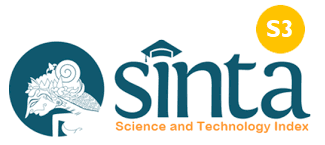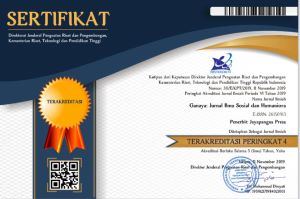Klik, Beli, Habis? Literasi Keuangan Digital Dalam Mengelola Perilaku Konsumtif Siswa Sekolah Dasar
DOI:
https://doi.org/10.37329/cetta.v7i4.3842Keywords:
Financial Literacy, Consumer, Elementary School, MarketplaceAbstract
The rapid development of digital technology, especially the rise of marketplace platforms, has changed the consumption landscape of society, including children. The ease of access and the variety of product choices offered by marketplaces have made elementary school students increasingly exposed to consumerism culture. This phenomenon raises concerns about the increase in consumer behavior among students who do not yet have a mature understanding of financial management. This study aims to explore the experiences and perceptions of students at SDN X in Malang Regency regarding the use of marketplaces and their influence on consumer behavior. Through a qualitative approach, this study seeks to understand how elementary school students respond to the ease of access and temptation of online shopping offered by marketplace platforms. Data were collected through in-depth interviews with students regarding online shopping activities. The results of the study indicate that the lack of parental control over the use of marketplaces causes students to tend to behave wastefully by buying items that are not related to school needs, spending more money on hobbies, and even being willing to stay up late to participate in flash sales. In addition, the majority of students make transactions with the Cash on Delivery (COD) system without their parents' knowledge, which often causes conflict when the purchased goods arrive. Although students have been introduced to financial literacy in schools, especially in the context of numeracy literacy, digital financial literacy education is still underdeveloped. This finding suggests the need to strengthen the digital financial literacy curriculum to help students manage their finances more wisely and reduce irresponsible consumer behavior. This study is expected to provide insights for educators and parents in supporting the development of more holistic financial literacy among children.
References
Ajzen, I. (1991). The Theory Of Planned Behavior. Organizational Behavior and Human Decision Processes, 50(2), 179-211.
Andhyka, B., Yustisiana, R., & Widayadi, W. (2024). The Improvement of Financial Literacy and Digital Payment Behavior in Generation Z: A Literature Review. International Journal of Business and Technology Management, 6(2), 636-645.
Bandura, A. (1977). Social Learning Theory. Englewood Cliffs. NJ: Prentice Hall.
Baptista, S. M. J. (2021). The Influence of Financial Attitude, Financial Literacy, and Locus of Control on Financial Management Behavior (Study Case Working-Age of Semarang). International Journal of Social Science and Business, 5(1), 93-98.
Beatty, S. E., & Ferrell, M. E. (1998). Impulse Buying: Modeling Its Precursors. Journal of Retailing, 74(2), 169-191.
Berutu, T. A., Sigalingging, D. L. R., Simanjuntak, G. K. V., & Siburian, F. (2024). Pengaruh Teknologi Digital Terhadap Perkembangan Bisnis Modern. Neptunus: Jurnal Ilmu Komputer Dan Teknologi Informasi, 2(3), 358-370.
Boksberger, P. E., & Melsen, L. (2011). Perceived Value: A Critical Examination Of Definitions, Concepts And Measures For The Service Industry. Journal of Services Marketing, 25(3), 229-240.
Buenestado, F. M., Montoya, M. S. R., Vazquez, G. I., & Patiño, A. (2023). Digital Competency As A Key To The Financial Inclusion Of Young People In Complex Scenarios: A Focus Groups Study. Journal Citizenship, Social and Economics Education, 22(1), 48-62.
Chandra, E. V. (2022). The Influence of Fanaticism and Consumptive Behavior Towards Financial Literacy in K-Pop Fans: A Study In An Entrepreneurship-Based University. Jurnal Entrepreneur Dan Entrepreneurship, 11(2), 89-100.
Chen, X., & Shen, S. (2023). The Impact Of New Media Marketing To People’s Consumption Behaviour. Lecture Notes in Education Psychology and Public Media, 4(1), 1150-1158.
Fauzia, A. N., & Nurdin. (2019). Pengaruh Literasi Keuangan Terhadap Perilaku Konsumtif. Edunomics Journal, 5(1), 79-84.
Gumilar, D. W. A., Sangka, K. B., & Totalia, S. A. (2024). Digital Financial Literacy And Digital Financial Inclusion In The Era Of Digital Disruption: Systematic Literature Review. Formosa Journal of Multidisciplinary Research (FJMR), 3(5), 1563-1576.
Harto, B., Rukmana, A. Y., Subekti, R., Tahir, R., Waty, E., Situru, A. C., & Sepriano, S. (2023). Transformasi Bisnis Di Era Digital: Teknologi Informasi Dalam Mendukung Transformasi Bisnis Di Era Digital. Jambi: PT. Sonpedia Publishing Indonesia.
Jhandir, S. U. 2012. Customer Satisfaction, Perceived Service Quality and Mediating Role of Perceived Value. International Journal of Marketing Studies, 4(1), 68-76.
Lusardi, A., & Mitchell, O. S. (2014). The Economic Importance Of Financial Literacy: Theory And Evidence. Journal of Economic Literature, 52(1), 5-44.
Miranda, D., Marmawi, R., Linarsih, A., & Amalia, A. (2022). Pengenalan Keterampilan Literasi Digital pada Anak Usia Dini. Edukatif: Jurnal Ilmu Pendidikan, 4(3), 3844–3851.
Mulindra, A. B., & Ariani, L. (2023). Pengaruh konformitas Teman Sebaya Terhadap Perilaku Konsumtif Pada Remaja. Jurnal Penelitian Pendidikan, Psikologi Dan Kesehatan, 4(2), 54-60.
Ngafifi, M. (2014). Kemajuan Teknologi Dan Pola Hidup Manusia Dalam Perspektif Sosial Budaya. Jurnal Pembangunan Pendidikan: Fondasi dan Aplikasi, 2(1), 33-47.
Pangrazio, L., et al. (2020). Young People’s Understandings Of Datafication In A Platform Society. Journal of Youth Studies, 24(1), 17-31.
Rahayu, R., Ali, S., Aulia, A., & Hidayah, R. (2022). Literasi Keuangan Digital dan Perilaku Keuangan. Journal of Accounting and Investment, 23(1), 78-94.
Respati, D. K., Widyastuti, U., Nuryati, T., Musyaffi, A. M., Handayani, B. D., & Ali, N. R. (2023). How Do Students’ Digital Financial Literacy And Financial Confidence Influence Their Financial Behavior And Financial Well-Being?. Nurture Publishing Group Journal, 17(2), 40-50.
Ridhayani, F., & Johan, I. R. (2020). The Influence of Financial Literacy and Reference Group toward Consumptive Behavior Across Senior High School Students. Journal of Consumer Sciences, 5(1), 29-45.
Salehudin, M. (2020). Literasi Digital Media Sosial Youtube Anak Usia Dini. Jurnal Ilmiah Potensia, 5(2), 106-115.
Susetyo, D. P., & Firmansyah, D. (2023). Literasi Ekonomi, Literasi Keuangan, Literasi Digital, Dan Perilaku Keuangan Di Era Ekonomi Digital. Economics and Digital Business Review, 4(1), 261-279.
Widyastuti, U., Respati, D. K., & Mahfirah, T. F. (2024). Digital Financial Literacy And Digital Financial Inclusion: A Multigroup Analysis Based On Gender. Humanities and Social Sciences Letters, 12(1), 33-42.
Wirakusumah, T. K. (2021). Konstruksi Makna Proses Kreatif Pada Kreator Di Biro Iklan. Jurnal Manajemen Komunikasi, 5(2), 135-155.
Downloads
Published
How to Cite
Issue
Section
License
Copyright (c) 2024 Eliza Silviana Miftakh, Hanjar Ikrima Nanda, Fitriana Santi

This work is licensed under a Creative Commons Attribution-ShareAlike 4.0 International License.
An author who publishes in the Cetta : Jurnal Ilmu Pendidikan agrees to the following terms:
- Author retains the copyright and grants the journal the right of first publication of the work simultaneously licensed under the Creative Commons Attribution-ShareAlike 4.0 License that allows others to share the work with an acknowledgement of the work's authorship and initial publication in this journal
- Author is able to enter into separate, additional contractual arrangements for the non-exclusive distribution of the journal's published version of the work (e.g., post it to an institutional repository or publish it in a book) with the acknowledgement of its initial publication in this journal.
- Author is permitted and encouraged to post his/her work online (e.g., in institutional repositories or on their website) prior to and during the submission process, as it can lead to productive exchanges, as well as earlier and greater citation of the published work (See The Effect of Open Access).
Read more about the Creative Commons Attribution-ShareAlike 4.0 Licence here: https://creativecommons.org/licenses/by-sa/4.0/.





